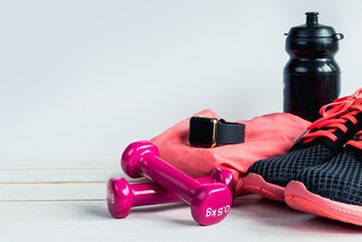Timing of resistance exercise influences glucose response in type 1 diabetes
A small cohort of healthy, active adults with type 1 diabetes experienced a greater rise in blood glucose and more frequent hyperglycemia when performing a series of resistance exercises in a fasted state in the morning when compared with performing the same regimen during the afternoon, according to findings published in The Journal of Clinical Endocrinology & Metabolism.

“Many of the recommendations for insulin adjustments and carbohydrate supplementation for exercise do not take into account whether individuals are being active while in a fasting state or in a fed state,” Jane Yardley, PhD, assistant professor of physical education at the University of Alberta, Augustana Faculty, and a member of the Alberta Diabetes Institute, told Endocrine Today. “Those who exercise first thing in the morning may not need as aggressive an approach. For those with type 1 diabetes trying to maintain or lose weight, fasting exercise may be a good option. However, those who struggle with hyperglycemia may want to avoid morning exercise, as it could make their blood glucose management more difficult.”
In a randomized, crossover study, Yardley and colleagues analyzed data from 12 healthy adults with type 1 diabetes who were habitually active (performing both aerobic and resistance exercise) recruited from the University of Alberta to participate in two rounds of exercise testing (nine women; mean age, 32 years; mean diabetes duration, 19 years; mean HbA1c, 7.4%; eight using insulin pumps). One session took place at 7 a.m., with participants in a fasted state, and the other took place at 5 p.m., with at least 48 hours in between sessions.
For each session, participants performed 40 minutes of resistance exercise, including three sets of eight repetitions, seven exercises, at the individual’s predetermined eight repetition maximum. Researchers collected blood samples immediately before exercise, immediately after exercise and 60 minutes after exercise. Interstitial glucose was monitored overnight after exercise by continuous glucose monitoring.
Researchers found that blood glucose levels rose during fasting morning exercise, from a mean of 9.5 mmol/L to 10.4 mmol/L, whereas levels declined with afternoon exercise, from a mean of 8.2 mmol/L to 7.4 mmol/L (P for time by treatment interaction = .031). At 60 minutes after exercise, the mean blood glucose concentration was higher for participants after fasting morning exercise vs. afternoon exercise (mean, 10.9 mmol/L vs. 7.9 mmol/L; P = .019).

Researchers found that mean CGM-measured glucose levels in the 6 hours after exercise did not differ between the morning and afternoon exercise sessions. The mean absolute glucose change for 6 hours after exercise was greater (P = .019) after morning exercise (mean, 2.7 mmol/L) vs. afternoon exercise (mean, 2 mmol/L) indicating more glycemic variability after the fasting exercise session, according to researchers. There were no differences between morning and afternoon resistance exercise with respect to the frequency of hypoglycemia in the 6 hours after exercise or in the nocturnal period after exercise.
Mean time spent in hyperglycemia was higher in the first 6 hours after morning exercise (mean, 62%; 95% CI, 36-82.6) compared with the first 6 hours after afternoon exercise (mean, 11.6%; 95% CI, 0-36). There were no between-group differences with respect to the percent of time spent in range during the overnight period.
“Overall, these data should be seen as another tool in the toolbox, providing patients with information about different options that are available to them,” Yardley said. “Findings such as this are also relevant in the development of closed-loop systems for use with type 1 diabetes patients, as time of day and food intake may alter blood glucose responses to exercise.”
Yardley said more studies examining the impact of different intensities and duration of exercise are needed.
“With resistance exercise in particular, we know very little about different types of training programs, such as high repetition, low resistance programs (which may be a more aerobic activity) and high resistance, low repetition (power training, plyometric training) and how these affect blood glucose levels during and after exercise,” Yardley said. “The current study used the same protocol as previously published studies, but simply compared the impact of time of day. Longer-term intervention studies will also shed light on the effectiveness of these types of training programs in maintaining muscle mass and bone density in individuals with type 1 diabetes.” – by Regina Schaffer
For more information:
Jane Yardley, PhD, can be reached at the University of Alberta, Augustana Faculty, 4901-46th Ave., Camrose, AB, T4V 2R3, Canada; email: jane.yardley@ualberta.ca.
Disclosure: Yardley reports she has received speaking fees from Dexcom Canada and research support from Abbott Nutrition Canada, Ascensia Diabetes Canada, Dexcom Canada, Lifescan Canada and Medtronic Canada.
